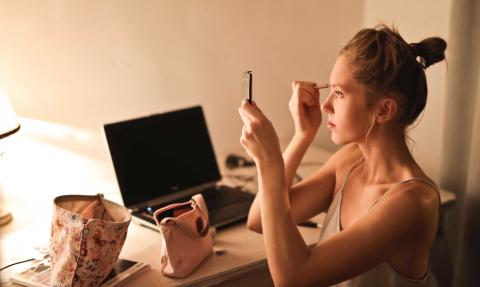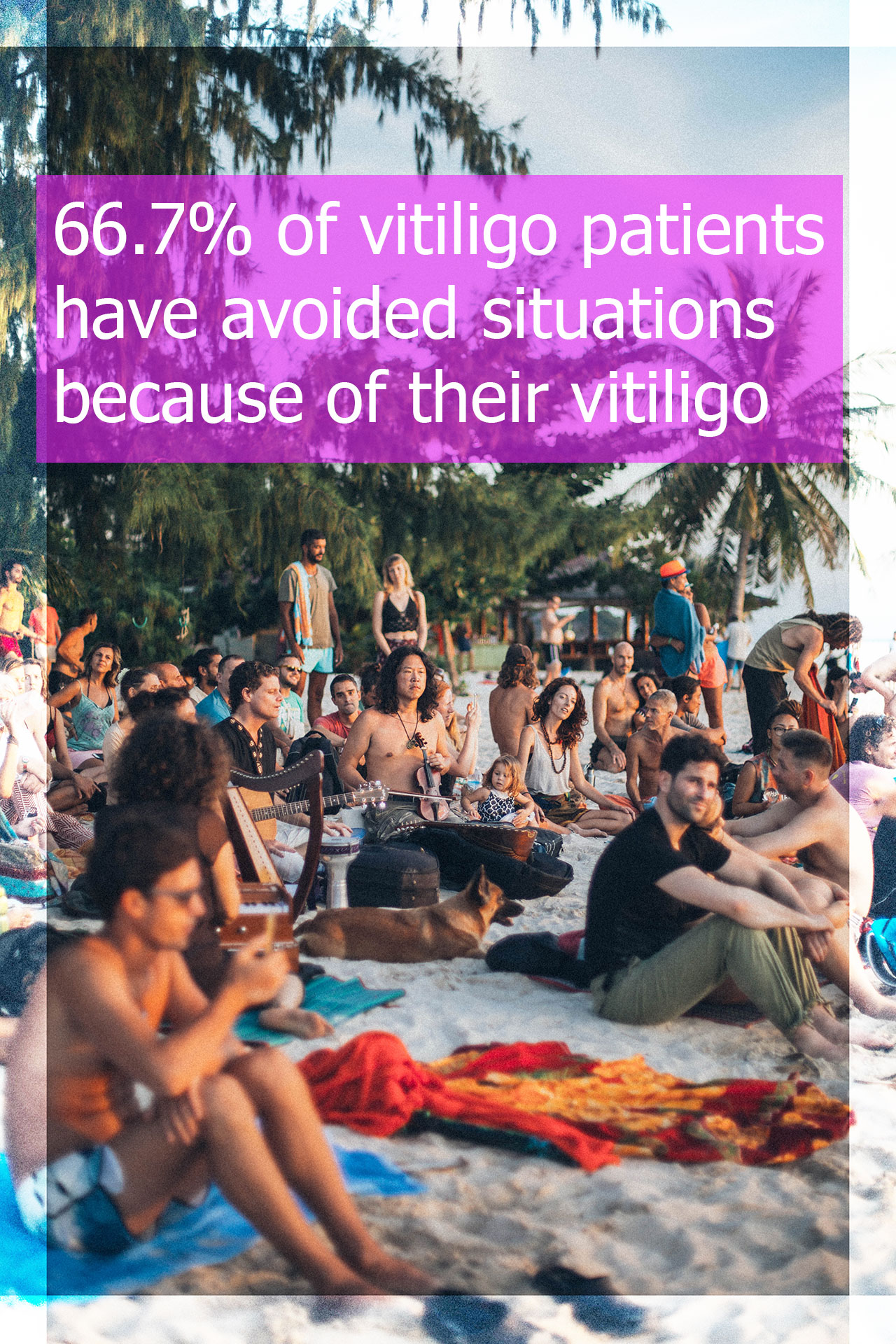
I would like to start off with a question. Have you embraced your vitiligo or are you still in denial?
It seems rather difficult to answer even for those who consider the matter to be internally resolved. Many persons who have accepted they have vitiligo turn on a regular basis to fashion and cosmetics for help in carrying out day to day activities.
I myself am very open about my spots BUT haven’t gotten over using foundation. Applied on face and hands when going to work or attending functions and events, it provides a shield from inquisitive eyes.
This sometimes feels like pretending or hiding and can lead to emotional barriers. These are particularly difficult to raise whenever you let someone new in your private circle such as a friend or loved one.
Eventually they will “discover” your true form and you fear becoming vulnerable or ridiculed. Your inner self does not want to become mocked so you wonder if you should continue the keep the facade or be open from the beginning?
As someone who has lived a lot of years with vitiligo, acceptance is easier as you advance in age. Fear of being vulnerable or ridiculed stops being so important. It lets way to priorities such as living a happy life that's not hindered by this affliction. So age comes with wisdom and problems you are facing now will seem trivial in hindsight at one point.
To help you along the journey, we've gathered a few insights on why people choose to hide their spots, why this is psychologically motivated and how can the habit be re-purposed:
Everyone needs to feel accepted, nobody wants to be marginalized
It’s true that every kid in school wants to be popular. In his eyes all other categories will likely face a different education experience . What determines the experience are their peers and what label they assign to them. Common attributes are based on race, sexual orientation, body proportion, association with other individuals and physical disabilities.
Persons with vitiligo find themselves having physical attributes that are not characteristic to any group. Many times. people with vitiligo will thus choose to hide their spots to better integrate a group.
We all want to pass as "normal" or healthy, but the definition of what is normal is shifting. What is normal? What is normal now but wasn't normal 30 years ago? Normal is what you make of it and someone else telling you that you are not normal is not in the position to make that judgement.
As someone with vitiligo, I like to think that I am as I should be. There are things that could be better and there are a million things that can be worse.
Is working harder to be “normal” enough motivation?
One might argue that going through a daily routine like a chameleon adapting to its environment is not worth the time spent. Energy and finances that go in concealing could be otherwise used for living a more stress-free life.
With modern advances in information technology, vitiligo is now a widely-known condition. In the modern world it becomes less of a stigma upon the afflicted individuals. People like the late Michael Jackson, Winnie Harlow and a lot more others have helped with public awareness.
This gives patients a new perspective on how not to let vitiligo become more than what it is, an affliction that is not life threatening and incurable at this moment. Curing means eliminating the root cause and not alleviating the symptoms
Concealing and protecting your health
Self-tanning lotions, makeup, sunscreen, vitamins and other over the counter medication can be used to protect against the effects of vitiligo and not necessarily as camouflage.

Photo by Elina Sazonova: https://www.pexels.com/photo/people-at-the-beach-1907092/
Image statistic source: [1]
I like to use make-up that has sun protection factor or together with a sun protection cream. In summer, I cover the areas that exposed to sunlight. I do this to avoid sunburns and be able to go to the beach and swim.
For me, self-tanning lotions proved difficult to use. The process of applying while at the same time getting a natural and uniform color was too time consuming.
Clothes provide good protection against the sun. I turn to shirts with rolled sleeves or sleeves long enough to cover the vitiligo spots on my elbows. To avoid sunburns, I always wear a cap and sunglasses when going to the beach. Sunburns are our Achilles’ heel, a severe risk since vitiligo spots lack melanin which protects skin against ultraviolet light.
[1] Krüger C, Schallreuter KU. Stigmatisation, Avoidance Behaviour and Difficulties in Coping are Common Among Adult Patients with Vitiligo. Acta Derm Venereol. 2015 May;95(5):553-8. doi: 10.2340/00015555-1981. PMID: 25269389.